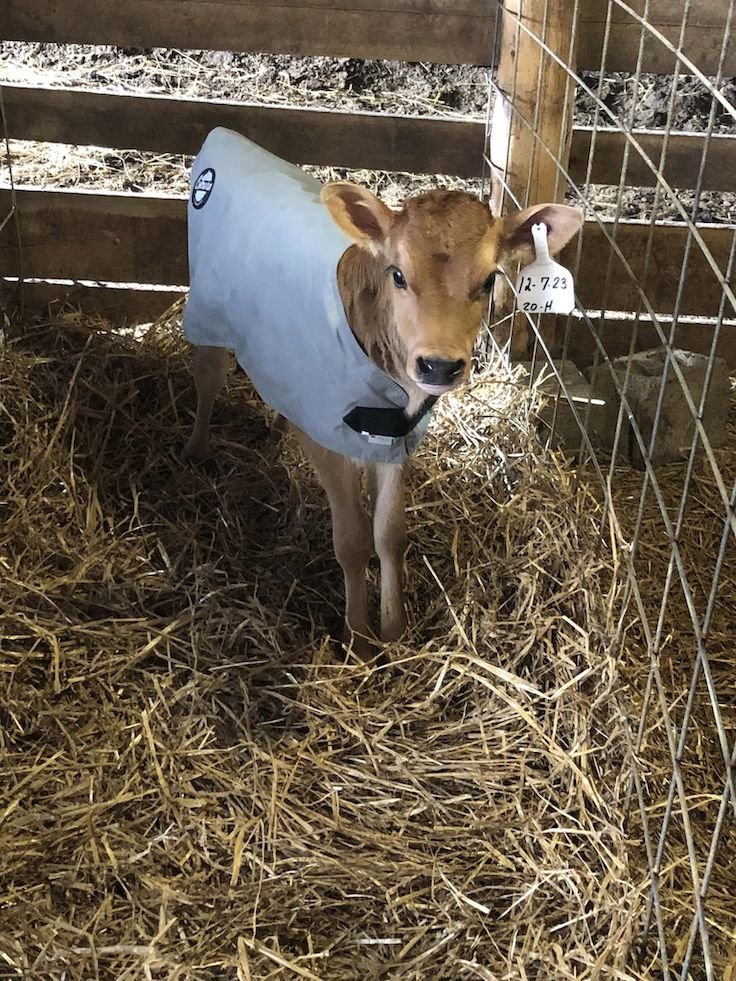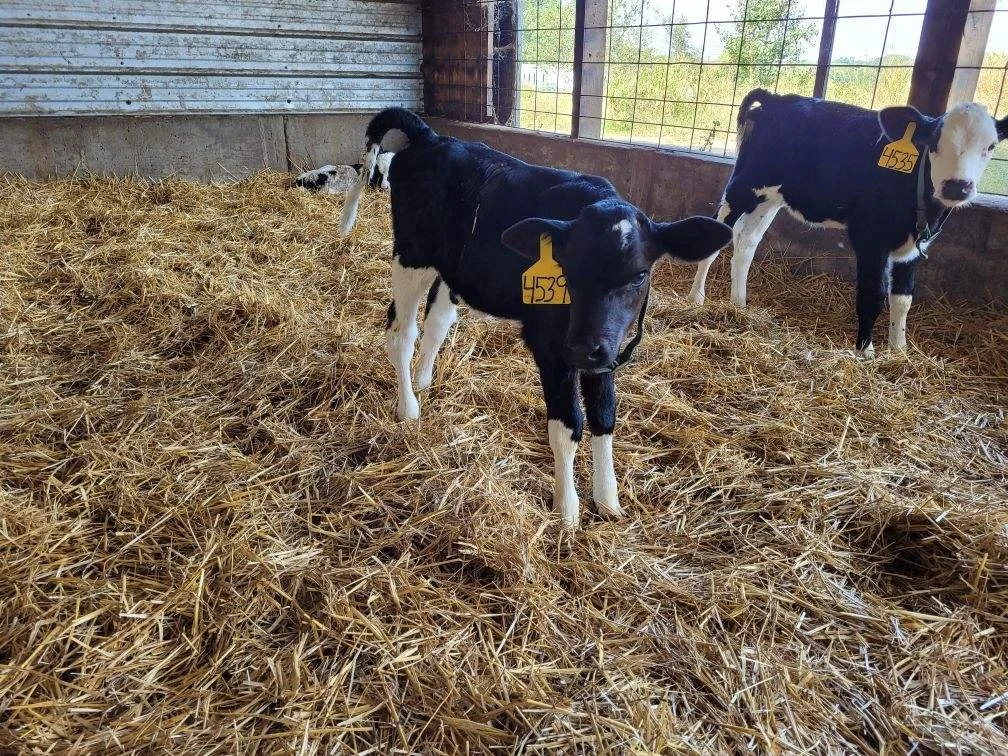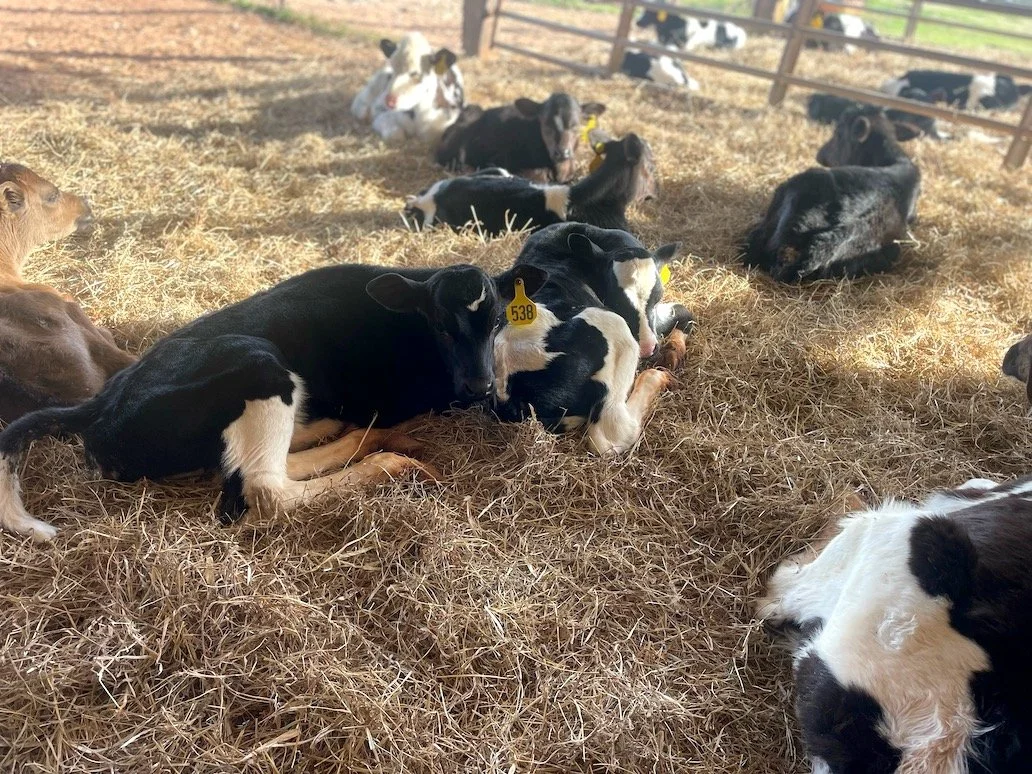How Farmers Keep Calves Warm
Animal care is a top priority year-round for dairy farmers, but the colder months require practices unique to the area’s typical winter weather.
Winters in the South can range from sunny and warm days to snowy and cold. Dairy farmers ensure cows are comfortable in the winter no matter what the weather is like outside.
Cows prefer temperatures between 40 and 65°F due to their thick skin and hair providing natural insulation. An unheated barn can stay at a comfortable temperature for cows thanks to the body heat cows generate. With a cow’s average body temperature of 101.5°F, several members of the herd staying in can keep everyone comfy on those cold mornings. As long as they’re well-fed, healthy, and have dry bedding available, cows don’t mind the cold. Rather than venturing outdoors, cows prefer to stay in their dry barns where they have plenty of space to lay down, walk, eat feed, and drink fresh water.
Cows are even happier to spend the coldest days in the barn once the farmers have insulated and prepped for the freezing temperatures. Attachable curtains and sidewalls can be added to barns for the winter. The cows at Nolandia Farm in Catlett, Virginia, recently moved into a new barn with accommodations for hot and cold weather. The barn has curtains that are kept closed during cold weather to help retain heat. The family added liners in the barn to help prevent drafts and keep the robotic milking unit from freezing up. Additionally, they give the cows extra feed during cold weather. The process of digesting feed creates body heat to help stay warm. With these adjustments, cows can go about their days comfortably.
The calves, however, get special attention in the winter. Some of the dairy farmers across the Southeast share below how they protect their calves in the winter months.
The winter months are here and that means it is time to bring out the jackets for the babies (and the employees!). The calves at Bishop’s Dairy in Green County, Kentucky, stay toasty during these cold snaps with their winter jackets on. Calves may wear winter jackets or blankets on colder days. Some farms even use special ear muffs for the calves. (We’ll wait here while you look it up.)
Keeping the calves warm is also a priority for Godfrey Dairy Farm in Madison, Georgia. During cooler winter days and nights, the calves spend their time in their calf hutch. A calf hutch is essentially a calf’s bedroom bedded with straw and two heat lamps to keep them warm and shielded from wind, rain, and sometimes even snow. For those rare days in Georgia that are truly cold, the farm has a special calf warmer that the calves can walk into and cuddle up to stay toasty! The hutches and heater are surrounded by wood paneling as an extra barrier from the wind.
Calves at GW Bell & Sons in Kings Mountain, North Carolina, keep warm in the winter with lots of extra straw bedding. This allows calves to snuggle down into the extra straw and stay warm during cold weather. The farm also increases the grain and hay they get so they have extra energy to keep warm.
The type of bedding matters to the comfort of the animals, and it may have to change with the weather. Middleton Farms, in Moss Point, Mississippi, is far enough south that they rarely get snow or ice during the winter. However, that doesn’t stop them from going the extra mile to keep their cows and calves warm. The farm recently swapped out the farm bedding for their newborn calves, switching from sand to hay to prepare for the cold rain forecasted in the area. Middleton typically uses sand to keep calves cool and clean, but they, like everyone else in the South, know you have to stay agile for whatever the weather decides to do.








